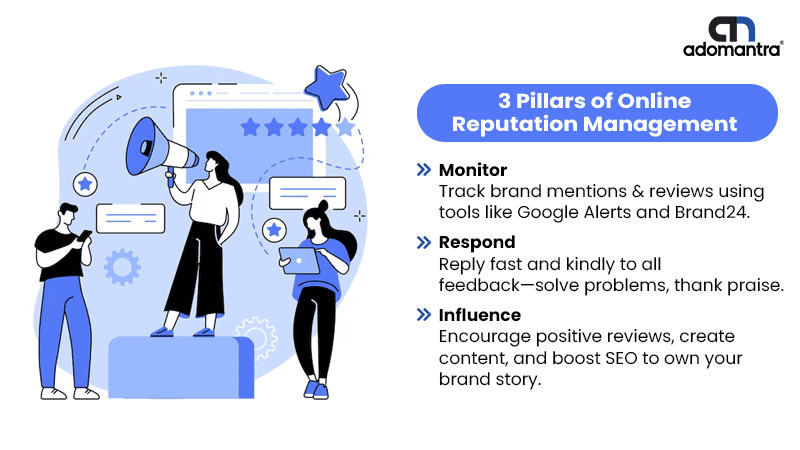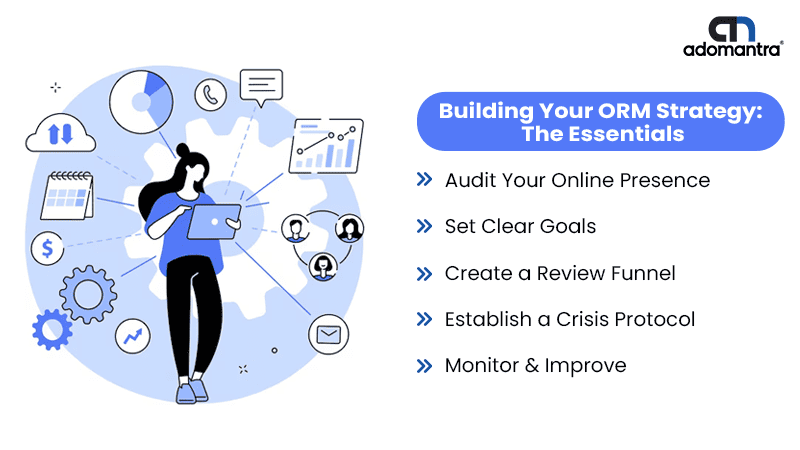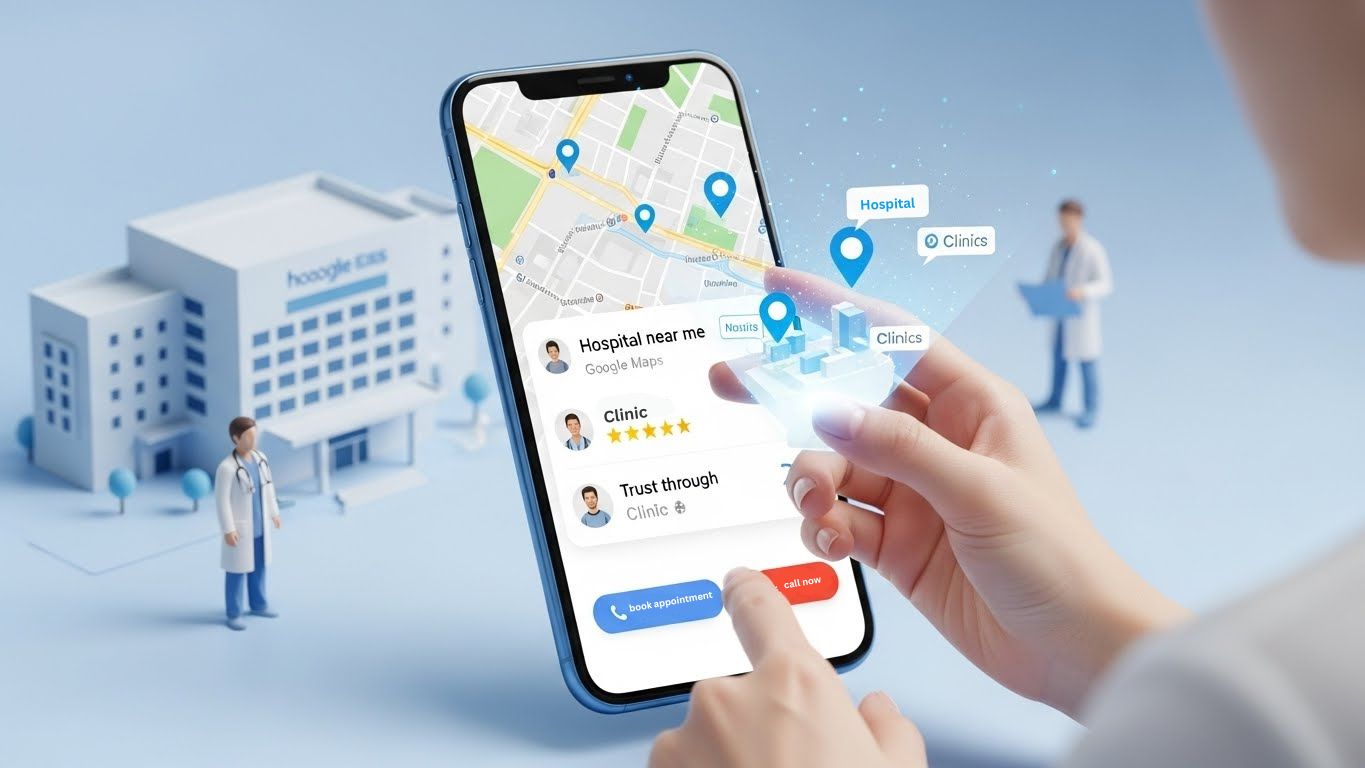
What is Online Reputation Management and Why It’s Critical for Your Business
When someone Googles your business, what do they find? A glowing review? A scathing complaint? A blog from five years ago that no longer reflects who you are today? Or maybe it’s an outdated listing with incorrect contact info?
Every digital trace—positive or negative—shapes how potential customers, investors, and even future employees perceive your brand. Nearly 3 out of 4 consumers trust a company more if it has positive reviews. Yet, 60% say negative reviews made them avoid a business. And 88% would use a business that replies to all its reviews, compared to just 47% who would use one that doesn’t respond at all.
That’s your online reputation management in action. And the truth is, it’s working whether you manage it or not.
Today’s consumers are savvier than ever. Before they buy, they search. Before they trust, they verify. Your digital presence speaks for you long before a salesperson, marketer, or support rep ever does.
This makes online reputation management for business more than a marketing strategy—it’s a business necessity. It influences your bottom line, your brand value, and your competitive edge in a crowded marketplace. If you’re not actively managing how your business appears online, you’re leaving your reputation—and revenue—up to chance.
Let’s break down what is online reputation management, why it matters, and how to manage online reputation before someone else controls your digital narrative.
What Is Online Reputation Management (ORM)?
Online Reputation Management (ORM) is the practice of controlling and improving how your brand is perceived across digital channels. It involves monitoring, influencing, and responding to conversations about your business online.
Think of ORM as your brand’s digital public relations. It includes:
- Search engine results
- Social media mentions
- Customer reviews
- News coverage
- Blogs and forums
The goal? Ensure people see your business in the best light, no matter where they search.
Importance of Online Reputation Management
Today’s digital world is review-driven, search-first, and reputation-sensitive.
According to BrightLocal’s 2023 Local Consumer Review Survey:
- 98% of consumers read online reviews for local businesses.
- 87% won’t consider a business with low ratings.
- 72% trust online reviews as much as personal recommendations.
That’s not just vanity. That’s your revenue pipeline on the line.
Your online reputation management strategies affect:
- Trust: People trust brands with positive reviews and professional responses.
- Visibility: Search engines favor brands with consistent, positive feedback.
- Conversion Rates: Great reputation = more clicks, leads, and sales.
- Recruitment: Top talent checks your online reviews too, especially on Glassdoor.
If you’re not managing your online presence, someone else is doing it for you—and not always in your favor.
The Benefits of Online Reputation Management
Implementing online reputation management services offers many advantages:
- Build trust with your customers and prospects.
- Increases online visibility and ranking on search engines.
- Enhances customer loyalty and repeat business.
- Provides valuable insights through customer feedback.
- Mitigates negative content and prevents reputation crises.
- Attracts quality talent by showcasing a positive employer brand.
- Supports revenue growth by influencing buyer decisions.
The Three Pillars of ORM

Let’s break down ORM into three core areas:
1. Monitoring: Knowing What’s Out There
You can’t manage what you don’t track. Monitoring tools help you scan the web for mentions of your brand, products, or key personnel.
Key tools for reputation monitoring include:
- Google Alerts: Simple and free for keyword tracking.
- Brand24, Mention, or Sprout Social: Real-time alerts and sentiment analysis.
- ReviewTrackers or Birdeye: Aggregates reviews from platforms like Yelp, Google, and TripAdvisor.
Watch out for:
- Negative reviews or ratings
- Brand mentions in news or forums
- Social media comments (both praise and complaints)
Pro tip: Set up alerts for competitors too—you’ll gain insight into market sentiment and potential gaps.
2. Response: Reacting with Strategy
Once you find what people are saying, you need to respond—quickly and smartly.
Don’t ignore negative reviews. Address them with professionalism. Research shows that 45% of consumers are more likely to support a business that responds to negative reviews with empathy and solutions.
How to respond:
- Be prompt: 24–48 hours is the golden window.
- Be human: Use the reviewer’s name, acknowledge their issue, and avoid corporate jargon.
- Offer resolution: If you can fix the issue, do it. If not, explain why.
- Take it offline when necessary: Offer a direct contact to resolve complex issues.
Positive reviews deserve attention too. A simple thank-you builds goodwill and encourages others to engage.
3. Influence: Proactively Shaping Perception
You don’t have to wait for feedback. You can guide it.
A strong ORM strategy actively builds positive online assets to dominate search results and drown out the noise.
Here’s how:
- Ask for Reviews: Prompt happy customers to leave feedback. Email follow-ups post-purchase can yield 20–30% response rates.
- Content Creation: Blogs, press releases, and thought leadership content help own branded search results.
- SEO: Optimize positive assets (e.g., Google Business Profile, social profiles) to rank higher than negative or outdated mentions.
- Public Relations: Submit guest posts, collaborate with influencers, or get featured in online media.
Your reputation is a digital real estate game. Own more of the top page results, and you own the narrative.
ORM in the AI Age
Reputation management is evolving fast. With AI and automation, businesses now have access to smarter tools that analyze sentiment, respond to reviews, and detect anomalies.
Emerging tech includes:
- Sentiment Analysis: Platforms like Chatmeter and Yext use NLP to track emotional tone.
- AI-generated Responses: Tools like Podium or NiceJob draft intelligent replies for customer reviews.
- Reputation Scorecards: Aggregated data helps benchmark your online presence across platforms.
Use technology to your advantage—but never lose the human touch.
Types of Online Reputation Management
Online Reputation Management (ORM) isn’t one-size-fits-all. Depending on your goals, audience, and industry, different strategies apply. Here are the core types of ORM you should understand—each with its own role in protecting and enhancing your brand online.
1. Proactive ORM
Proactive ORM focuses on building a strong, positive digital presence before problems arise. This includes publishing high-quality content, encouraging satisfied customers to leave reviews, and actively engaging with your audience on social media.
The goal here is to establish trust, credibility, and visibility so that any negative content that does appear is less impactful. You’re essentially building a reputation buffer—an online foundation strong enough to absorb occasional criticism without damage.
Brands that consistently publish blogs, thought leadership content, and positive press releases are engaging in proactive ORM. They’re shaping the narrative before others can.
2. Reactive ORM
This type kicks in when your business faces a reputation issue—like a negative review going viral, a customer complaint gaining traction, or false information being spread online.
Reactive ORM is about damage control. It involves swift responses, public apologies (when necessary), corrections, and direct outreach to resolve issues. It's also about updating or removing harmful content if possible—sometimes through legal or compliance channels.
In a crisis, how and when you respond can make the difference between regaining trust or losing it for good. That’s why businesses need both reactive and proactive strategies ready at all times.
3. Social Media Reputation Management
Social platforms are now customer service hubs and public feedback loops rolled into one. Managing your reputation here means staying responsive, transparent, and aligned with your brand voice.
This includes replying to comments, addressing complaints quickly, thanking followers for positive shout-outs, and correcting misinformation publicly (when needed). Ignoring social media mentions can make your brand seem unbothered—or worse, indifferent.
Tools like Hootsuite, Sprout Social, and Brandwatch help you track mentions and manage responses efficiently.
4. Search Engine Reputation Management (SERM)
SERM focuses specifically on how your brand appears in search engine results. This is crucial because 75% of users never scroll past the first page of Google results.
SERM involves optimizing positive content (like blogs, testimonials, news features) to rank higher and push negative or outdated links further down the search results. It also includes using SEO strategies, backlinks, and content diversification (videos, FAQs, press releases) to dominate branded keyword searches.
If a negative article or bad review ranks high for your brand, SERM becomes your top priority.
5. Third-Party Review Management
Managing third-party review sites like Google Business, Yelp, Trustpilot, TripAdvisor, or industry-specific platforms is a critical part of ORM. These reviews often show up in search results and heavily influence buying decisions.
Effective review management includes responding to all reviews—good and bad—in a timely, respectful tone. It also involves flagging fake or abusive reviews when appropriate and encouraging satisfied customers to share their experiences.
Remember, a single negative review won’t sink your business—but ignoring it just might.
What Happens When You Ignore ORM?
Letting your reputation manage itself is risky.
Here’s what can go wrong:
- One Viral Complaint: A single angry customer with a Twitter thread can cost you thousands—or worse, go viral.
- Negative SEO: Competitors (or malicious actors) can create fake blogs or spammy links to damage your search results.
- Fake Reviews: Whether it's bots or bad actors, fake reviews can skew perception.
- Lost Trust: Silence suggests you don’t care. Inaction can be just as damaging as bad reviews.
The Harvard Business Review found that a one-star increase in Yelp rating leads to a 5–9% revenue increase. If that’s what one star can do, imagine the loss from a negative spiral.
Building an ORM Strategy for Your Business

Ready to take control of your digital presence? Here’s your game plan:
1. Audit Your Online Presence
Begin by understanding what the internet currently says about your business. Search your brand name, key products, services, and leadership team on Google and other search engines. Go beyond the first few links—review the top 20 search results, including news articles, review platforms, blogs, YouTube videos, and social mentions.
You’re not just looking for accuracy. Focus on tone, relevance, and visibility. Are the most prominent search results painting your brand in a positive light? Are outdated or misleading links ranking higher than your best content? Make a note of anything that needs updating, correcting, or boosting.
This audit forms the foundation of your ORM strategy. You can’t improve your digital footprint if you don’t know where you currently stand.
2. Define Clear Goals
Not every business needs the same reputation strategy. Your goals should align with your current challenges and growth ambitions.
Are you dealing with negative reviews that are hurting sales? Your priority may be suppression and damage control. Trying to position your CEO or founder as an industry expert? Focus on content creation and thought leadership. Want to boost your ratings on review sites? That’s about customer experience, automation, and timing.
Other common goals include enhancing trust for better conversion rates, attracting top-tier talent, improving employer branding, or preparing your online presence for a major funding round. Whatever your goal, make it measurable—think star ratings, brand sentiment scores, Net Promoter Score (NPS), or search engine ranking improvements.
3. Create a Review Funnel
Customer reviews are the heartbeat of your online reputation. But most satisfied customers won’t leave reviews unless you prompt them—so make it easy and consistent.
Set up automated review requests via email or SMS after a transaction, support ticket closure, or successful service delivery. Use friendly, branded messaging that thanks customers and asks them to share their experience. Tools like Podium, Birdeye, or Trustpilot can help you streamline this process.
If you're operating in regions or industries where it's allowed, you can incentivize feedback with loyalty points, discounts, or future service perks—but always ensure you're complying with review site policies. The goal isn’t to game the system; it’s to nudge happy customers toward voicing their experience.
Over time, this steady inflow of genuine reviews will dilute the impact of any negative ones and elevate your brand’s social proof.
4. Establish a Crisis Protocol
Every business, no matter how loved, is just one angry tweet or viral complaint away from a potential crisis. That’s why having a documented crisis protocol is critical.
Start by identifying who’s responsible when things go south. Do you have a dedicated PR or customer support team? Assign clear roles—who drafts statements, who responds, and who approves?
Next, build a crisis playbook. This should include messaging templates for different scenarios—product issues, service delays, executive controversies, social backlash, and more. Define tone, escalation points, and response timelines.
It’s also smart to run reputation drills with your team, just like you would for cybersecurity or physical safety. Practicing these responses ensures you’re not scrambling under pressure, and it can dramatically reduce response time when reputation damage is at stake.
5. Monitor, Analyze, Improve Continuously
Once your ORM strategy is in motion, you’ll need to track how well it’s working—and where you can fine-tune.
Set key performance indicators (KPIs) such as star rating averages, number of new reviews per month, review response rate, NPS, and sentiment analysis of brand mentions. Free tools like Google Alerts can help you stay informed, while premium tools like Brand24, Mention, or Sprout Social offer deeper insight into sentiment and trending discussions.
Use these insights to adapt your messaging, improve customer experiences, and guide your content strategy. For example, if reviews frequently mention long wait times or unclear communication, use that feedback to make operational changes—and then respond publicly to show you’re taking action.
Remember, ORM isn’t a one-time campaign. It’s an ongoing discipline. By consistently monitoring and improving, you not only defend your brand but build long-term equity in the minds of customers, employees, and partners.
Final Thought: Reputation = Revenue
In today’s digital economy, your online reputation management is your most valuable brand currency.
People Google first and decide second. Whether you're a startup or an established company, investing in online reputation management for business is essential.
When you manage your narrative, you build trust. And when you build trust, you fuel growth.
Need help crafting a resilient, high-impact reputation strategy?
Partner with Adomantra—your digital ally in building credibility, visibility, and long-term brand success.







